Examples of Scans
Normal vascular anatomy is generally symmetrical but if an area of greater heat is observed on one part of the body that you don’t see on the corresponding region of the opposite side of the body, this could possibly indicate some underlying health issue.
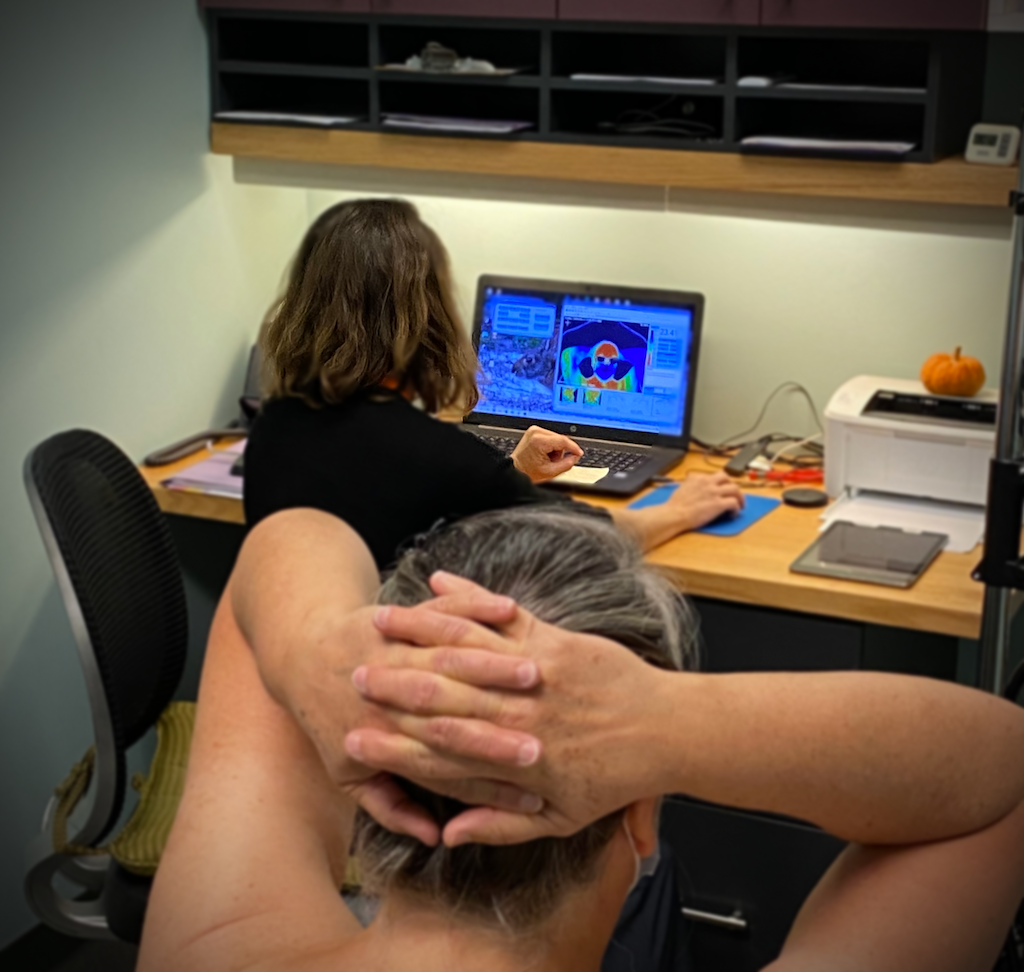
The central concept when evaluating any infrared image is to determine if there are any areas of asymmetrical heat.
For breast scans, areas of heat on one breast should be no hotter than 1.5 degrees Celsius than the opposite breast and in the case of the nipple, no greater than 1.0 degree than the opposite nipple. Scans will be given a Thermobiological grade using the following system:
TH-1: This grade is given when there are essentially no areas of heat observed. This is a normal scan.

TH-2: This grade is given when there are areas of vascular heat observed but they are symmetrical. This is also a normal scan.
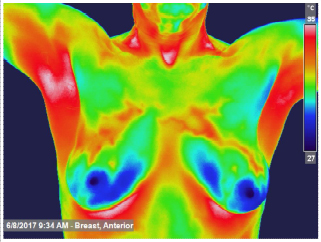
TH-3: This grade is given when there is one area of asymmetrical heat and is considered equivocal.
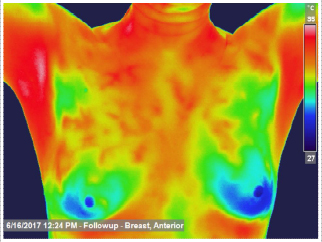
TH-4: This grade is given when there are two areas of asymmetrical heat and is considered abnormal with a moderate index of suspicion.
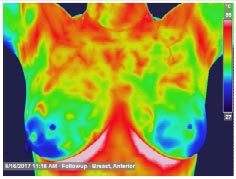
TH-5: This grade is given when there are three or more areas of asymmetrical heat and is considered highly abnormal with a high index of suspicion.
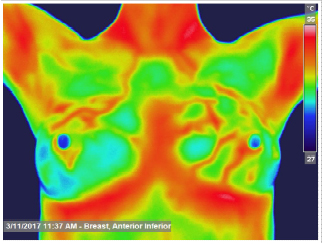
TH-1:
This scan shows the breast to be a uniform shade of blue with no signs of vascular heat.
TH-2:
This scan shows symmetrical vascularity bilaterally
TH-3:
This scan shows a region of greater heat on the left upper outer breast which is more than 1.5 degree Celsius warmer than the corresponding region of the opposite breast.
TH-4
This scan shows a region of greater heat on the right outer breast and the left inner breast, both being more than 1.5 degree Celsius warmer than the corresponding region of the opposite breast.
TH-5
This scan shows multiple regions of asymmetrical heat mostly on the left breast
While the TH3, TH4 and TH5 designations are not considered normal, these findings do not automatically mean that a client has breast disease. As a screening tool, the goal of thermography is to identify areas of asymmetry which should then be investigated further, typically by looking at those warmer areas with ultrasound to see if there is possibly a mass, or using other forms of evaluation such as breast MRI or radiographic mammography.
Clients who are found to have a TH3 or higher grade should undergo repeat thermal imaging in 3 to 6 months to determine if any changes are observed. If there are no changes, then this area of heat may represent normal vascular anatomy in which case the higher grade finding is less concerning.
Once this is demonstrated, then yearly Thermascans will be adequate. The greatest documented value of breast thermography comes from performing serial images which over time can distinguish normal anatomy, which is consistent and generally unchanging, from new heat patterns which would be suspicious and lead to more detailed investigation. The first thermal imaging study provides a baseline against which future scans will be compared. Clients are advised to maintain their regularly scheduled breast examinations and routine radiographic mammography with their primary care physician.

Office
4505 Fair Meadow Lane, Suite 111 Raleigh, NC 27607
5725 Oleander Drive, Suite B-5 Wilmington, NC 28403
7-C Corporate Center Ct Greensboro, NC 27408
How to schedule your scan
Email: kelly@carolinacenter.com
You can also call (919) 781-6999 to schedule.
